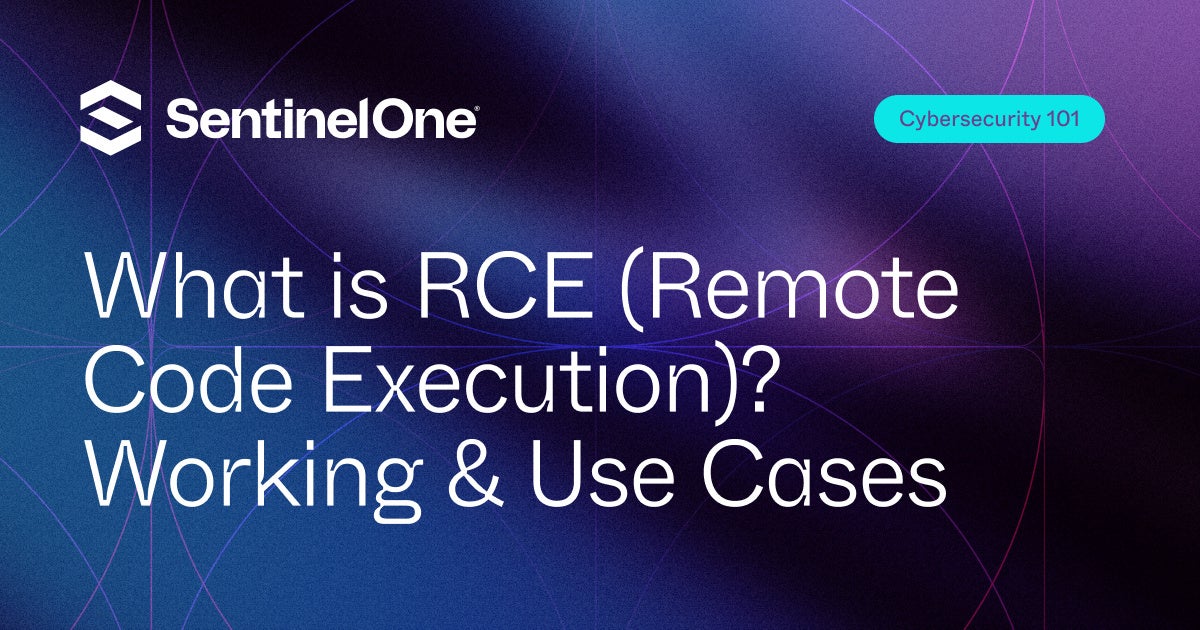Remote Code Execution (RCE) vulnerabilities allow attackers to run malicious code on a victim’s system. This guide explores how RCE works, its potential impacts, and effective prevention strategies.
Learn about the importance of secure coding practices and vulnerability management. Understanding RCE is essential for organizations to safeguard their systems against exploitation.

A Brief Overview of RCE
RCE is a severe security vulnerability or attack technique involving a malicious actor gaining unauthorized access to a targeted system or device from a remote location. This access allows the attacker to execute arbitrary code, essentially taking control of the compromised system. RCE often leads to data breaches, system compromises, and even the complete takeover of an affected device or network.
Origin and Evolution
RCE vulnerabilities originated alongside the growth of networked computing. As software and network infrastructure became more complex, so did the potential for exploitable flaws. Vulnerabilities like buffer overflows and injection attacks (e.g., SQL injection) gave rise to RCE. Over time, attackers refined their techniques, and RCE became a focal point of cyberattacks.
Significance and Contemporary Use
In the current threat landscape, RCE vulnerabilities remain highly sought after by malicious actors. They are frequently used in targeted attacks, as well as in the propagation of malware, ransomware, and other forms of malicious software. Sophisticated cybercriminals and nation-state actors employ RCE to infiltrate systems, establish persistent access, and exfiltrate sensitive data. The consequences of successful RCE attacks can be catastrophic, often leading to data loss, financial losses, and reputational damage.
RCE is wielded by a range of actors, from state-sponsored hackers engaged in cyber espionage and cyber warfare to financially motivated cybercriminals carrying out ransomware attacks. Hacktivists may also employ RCE to advance political or ideological agendas, while insider threats can exploit these vulnerabilities for internal sabotage. On the defensive side, cybersecurity professionals and organizations continuously monitor for RCE vulnerabilities, apply patches, and employ intrusion detection systems to thwart these threats.
RCE vulnerabilities and attacks underscore the critical importance of proactive cybersecurity measures, including regular software updates, penetration testing, and robust access controls. As cyber threats continue to evolve, understanding the implications of RCE is crucial for bolstering digital defenses and safeguarding sensitive data and critical infrastructure in an era where cyberattacks are both persistent and highly sophisticated.
Understanding How RCE Works
RCE attacks typically start with the discovery of a vulnerability in the target system. These vulnerabilities can result from issues such as buffer overflows, improper input validation, or misconfigurations in software, web applications, or operating systems.
Once a vulnerability is identified, the attacker crafts a malicious payload that can exploit it. This payload is often constructed in a way that triggers unexpected behavior in the target system, such as injecting malicious code. Attackers may use various injection techniques, depending on the nature of the vulnerability. For web applications, common methods include SQL injection, cross-site scripting (XSS), and command injection. These techniques involve inserting malicious code into user inputs, which the target system processes without proper validation.
The attacker delivers the malicious payload to the target system through a network connection. This can be done via a compromised website, email attachments, malicious links, or other means. The payload is designed to exploit the identified vulnerability when processed by the target. When the target system processes the payload, it triggers the vulnerability, allowing the attacker to gain control over the system. This may involve manipulating memory, overwriting critical data, or executing commands within the context of the target application or system.
In some cases, attackers seek to escalate their privileges to gain higher levels of access on the compromised system. This could involve exploiting additional vulnerabilities or taking advantage of misconfigurations. To maintain control over the compromised system, attackers often employ techniques to ensure continued access. This can include creating backdoors, installing malware, or modifying system settings. Once the attacker has control over the system, they may exfiltrate sensitive data or use the compromised system to launch further attacks on other targets.
Exploring the Use Cases of RCE
RCE stands as a formidable threat in today’s cybersecurity landscape, enabling attackers to gain unauthorized access to systems and execute arbitrary code remotely. Attackers often exploit RCE vulnerabilities in web applications. By injecting malicious code through input fields or exploiting vulnerabilities like SQL injection, they can compromise web servers and execute arbitrary code.
Vulnerabilities in software and operating systems are also prime targets for RCE attacks. Malicious actors seek out and exploit these weaknesses to execute code, gain unauthorized access, and potentially compromise the entire system. In some cases, RCE is achieved through command injection attacks. Attackers manipulate system commands to execute arbitrary code on the target system, leading to unauthorized access and control.
When implementing VPNs, review the following key considerations:
- Patch Management – Regularly update and patch software, operating systems, and web applications to mitigate known RCE vulnerabilities.
- Vulnerability Scanning – Conduct vulnerability assessments and penetration testing to identify and remediate potential RCE risks.
- Security Hygiene – Implement proper input validation and secure coding practices in software development to reduce the risk of RCE vulnerabilities.
- Network Segmentation – Segment networks to limit lateral movement in case of an RCE breach, minimizing the potential impact.
- Threat Intelligence – Stay updated with threat intelligence feeds to be aware of emerging RCE threats and vulnerabilities.
- Incident Response – Develop robust incident response plans that include procedures for detecting, mitigating, and recovering from RCE incidents.
Conclusion
What makes RCE particularly alarming is its evolving sophistication. Attackers are continually developing new techniques and exploiting vulnerabilities to breach even the most fortified systems. Organizations must remain vigilant, prioritize security, and collaborate with cybersecurity experts to fortify their cybersecurity defenses against the risk of RCE.
Cybersecurity professionals are continually challenged to identify, patch, and defend against RCE vulnerabilities to safeguard critical data and infrastructure. Understanding the mechanisms and implications of RCE is essential for staying ahead of cyber threats.